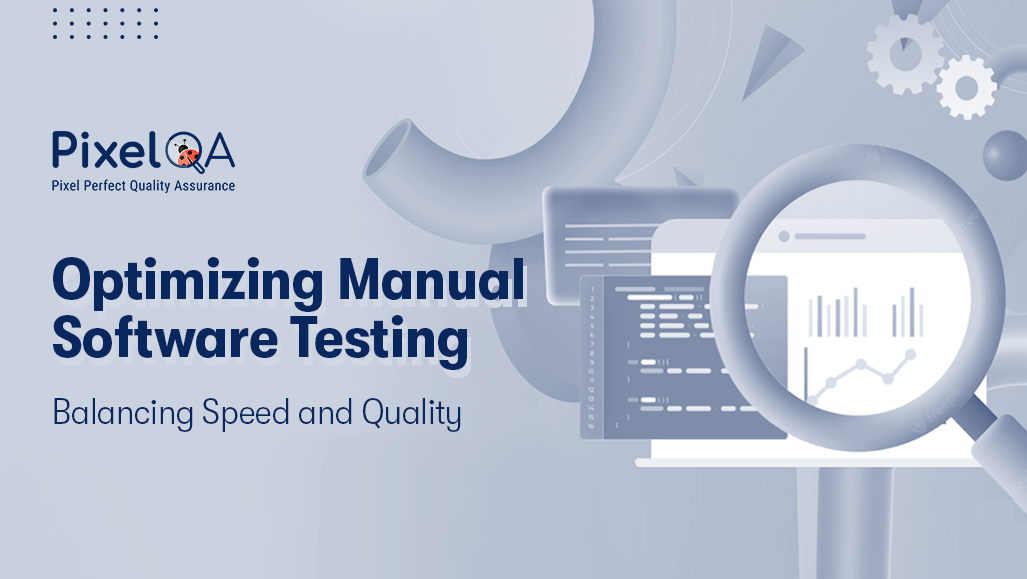
This is especially important for small projects with limited resources. However, with the increasing complexity of the project, the time and effort required for manual software testing services may also rise. This can lead to delays. As time and quality testing manually are inversely proportional, speeding up manual software testing without losing quality is necessary in order to achieve deadlines as well as ensure software reliability. The following are the measures that can be employed in order to achieve the balance.
Table of Content
- Test Case Prioritization
- Effective Test Case Design
- Test Data Management
- Test Execution in Parallel
- Leverage Exploratory Testing
- Effective Communication and Collaboration
- Test Automation for Repetitive Tasks
- Minimize Test Case Redundancy
- Continuous Feedback and Improvement
- Conclusion
Test Case Prioritization
An efficient approach to enhance manual software testing is to rank test cases in the order of their importance. Not all test cases weigh equally regarding usability. Grouping test cases as high, medium, and low will enable us to focus on pressing issues first. High-priority test cases most commonly involve the exercising of key functionality or critical paths that affect the performance of the application.
High Priority: Test cases related to core functionality, high-risk areas, or customer-facing features.
Medium Priority: Test cases covering less critical features or components.
Low Priority: Test cases for edge cases or cases with low impact.
Prioritizing ensures that critical tests get executed first, thus helping to expose major defects as early as possible in the life cycle.
Effective Test Case Design
Well-drafted test cases become easy to implement and maintain, and thus quicken the testing process. An ideal test case states its target clearly and concisely but with sufficient supporting detail to avoid being overly complex. This avoids distracting the testers while executing the steps of a test case and speeds up the manual software testing process.
Use clear steps: Each step should be easy to follow and require minimal clarification.
Reduce redundant steps: Remove any unnecessary steps that do not add value to the testing process.
Focus on critical paths: Concentrate on the most common workflows that users follow.
Test Data Management
Having the right test data ready and accessible is crucial for speeding up manual software testing. Creating and managing test data beforehand saves valuable time when executing test cases. This also helps in reducing setup time for testing scenarios that require specific data sets.
- Automate test data generation where possible.
- Prepare a test data repository for common use cases.
- Create reusable test data to avoid recreating data for every test cycle.
By eliminating the need for repetitive data setup, testers can focus on executing test cases more effectively.
Test Execution in Parallel
In cases where multiple testers are available, consider executing different sets of test cases in parallel. This method eases workload distribution and accelerates the manual software testing process. Testers, however, should maintain continuous and clear communication to avoid doubling up on efforts and creating confusion.
For parallel execution, the test cases could also be grouped based on functional areas. This guarantees that each tester is focused on one part of the application while still achieving complete coverage.
Leverage Exploratory Testing
Exploratory testing is an excellent resource for bug-finding and a time-saver for manual software testing. Testers utilize their experience and intuition to navigate the application, exposing faults that were not targeted by the initial test case. There is more freedom in deciding how and what to test compared with running individual test cases.
Exploratory testing is supposed to test unpredictable areas of the application, mostly in complex and dynamic environments.
Effective Communication and Collaboration
The communication of the testing team must develop good relations with developers and other stakeholders. It is the key to accelerating manual software testing. When the tester has clarity on the purposes and scope, their work is bound to be smoother.
- Daily stand-ups or progress meetings: These are meetings where all discuss any blockers and progress for the team to function smoothly.
- Use collaboration tools: Tools like Jira, Slack, and Trello help track test cases and bugs as well as communications between team members.
Working together helps solve problems quickly. Any issues discovered during testing can be resolved promptly, reducing delays and confusion.
Test Automation for Repetitive Tasks
Manual software testing acceleration is the primary focus here. However, not all tasks should be reserved for manual execution. Regression testing is one excellent candidate for automation. Hybrid is a good way to get the testing process in order with a combination of manual and automated testing. It will bring down the burden and speed up the complete test cycle.
For simple and repetitive tasks Automated testing tools can help reduce manual effort and improve the efficiency of the testing process.
Minimize Test Case Redundancy
To conserve time, any repetitive or conflicting test cases should be minimized. If it does not add value, a test case should not be there. Keeping multiple tests from testing the same functionality is also crucial. Test case reviews and updates allow for deleting redundant tests and keeping up with current development.
Continuous Feedback and Improvement
- Improving the speed of manual testing should be a continuous endeavor. Between test cycles, gather feedback from testers on what was good and what could have worked better. Identify bottlenecks, inefficiencies, and areas in which further tooling may be useful.
- Post-test retrospectives: A retrospective should be done to analyze the factors that impeded the testing process and think of ways to improve.
- Refine test processes: Identify areas where automation or improved organization of test cases could help speed up testing.
Conclusion
With the right strategy, it is possible to accelerate manual software testing without compromising the quality of the testing process. This can be done by focusing on testing priorities, perfecting test case design, utilizing effective test data management, and embracing parallel testing and exploratory detection. Additionally, maintaining open communication and continually improving your approach helps balance speed and quality in manual software testing. Incorporation of these strategies with your self-testing, or by leveraging expert Software Testing Company, would help you maintain schedule adherence while equally assuring that an error-free and high-performing software product gets delivered.
About Author
 Ashok Makwana is a seasoned Quality Assurance professional with a passion for continuous learning. He started his journey as a QA in September 2020 and embraced challenges as opportunities for growth. His drive to excel led him to aspire to become a Lead QA Manager, exemplifying dedication and expertise in his field. With a proactive approach and a thirst for knowledge, Ashok Makwana embodies the spirit of lifelong learning and achievement in quality assurance.
Ashok Makwana is a seasoned Quality Assurance professional with a passion for continuous learning. He started his journey as a QA in September 2020 and embraced challenges as opportunities for growth. His drive to excel led him to aspire to become a Lead QA Manager, exemplifying dedication and expertise in his field. With a proactive approach and a thirst for knowledge, Ashok Makwana embodies the spirit of lifelong learning and achievement in quality assurance.

_638781348179259394.png)